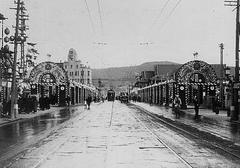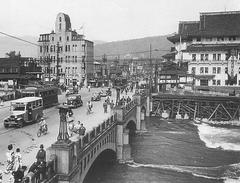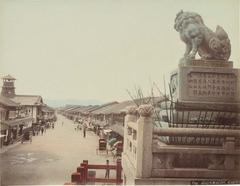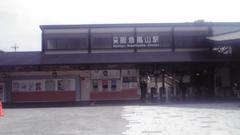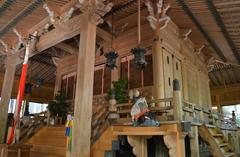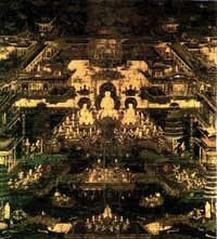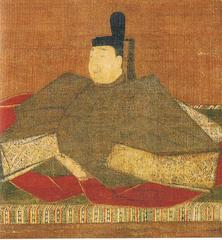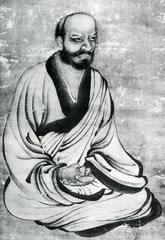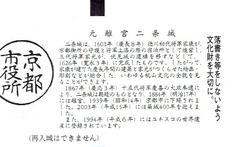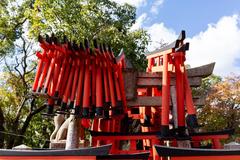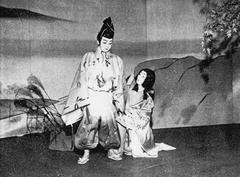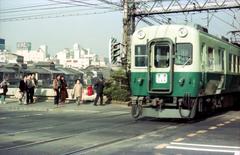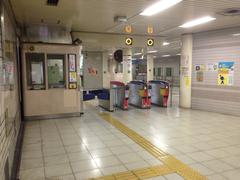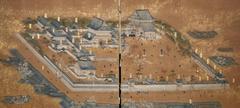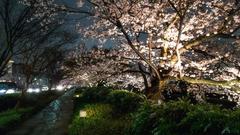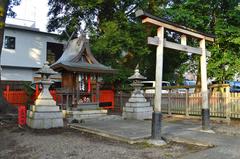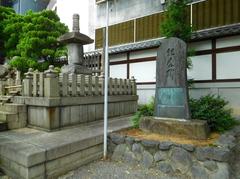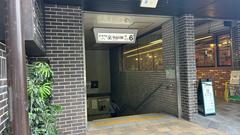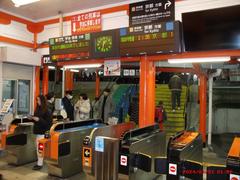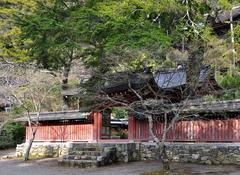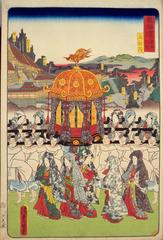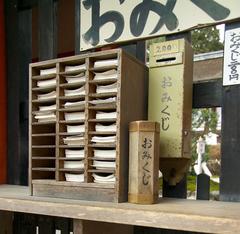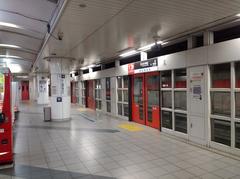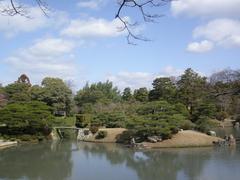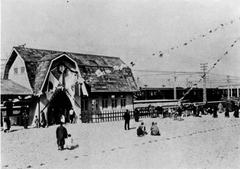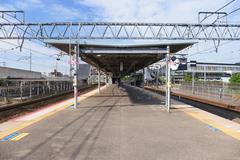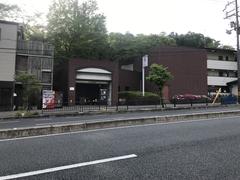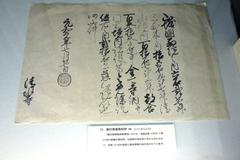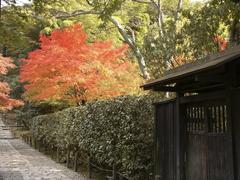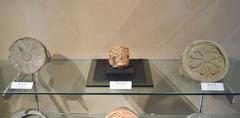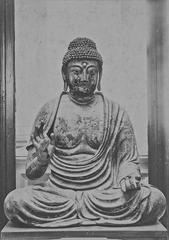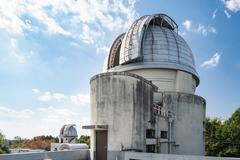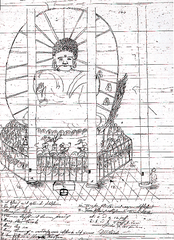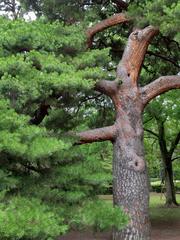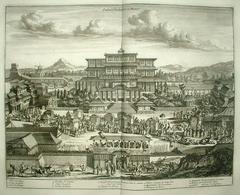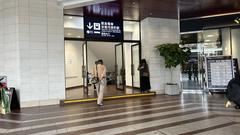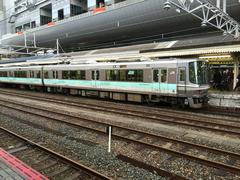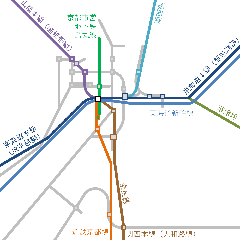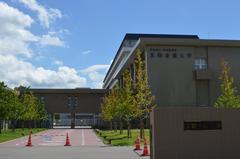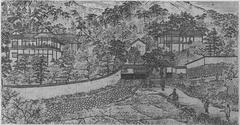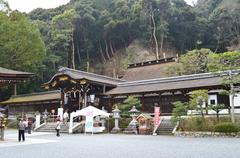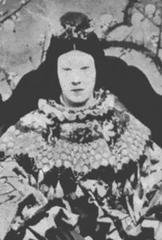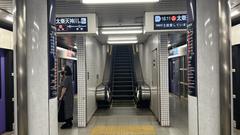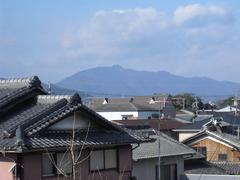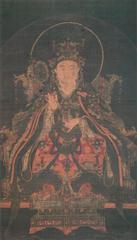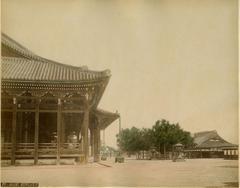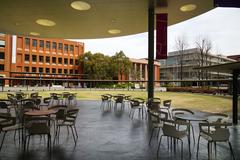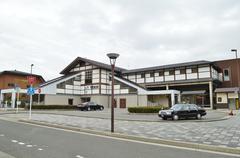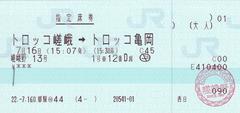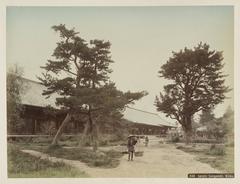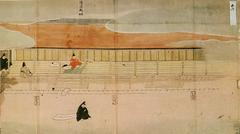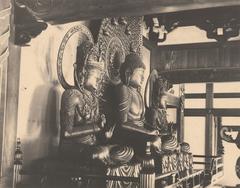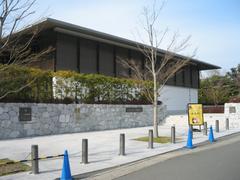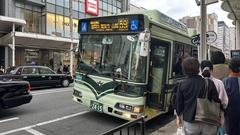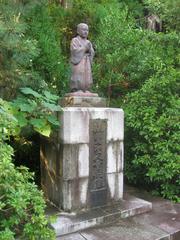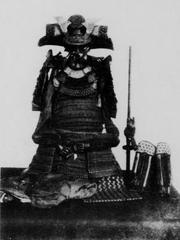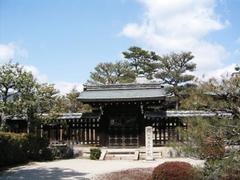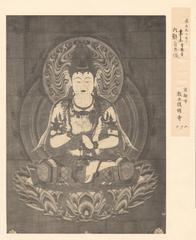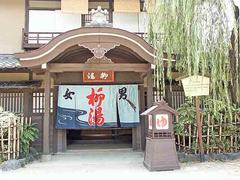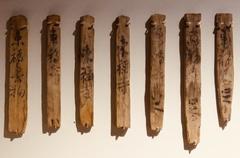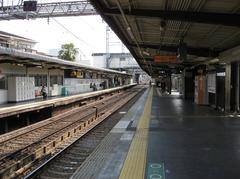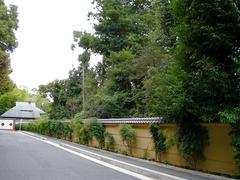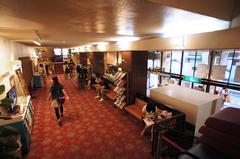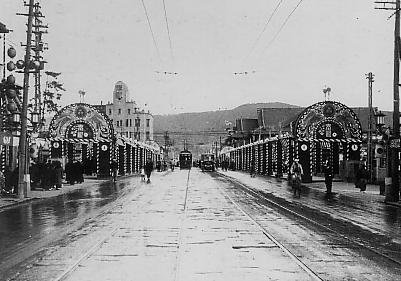
Shijō Street Kyoto: Visiting Hours, Tickets, and Attractions Guide
Date: 14/06/2025
Introduction: Shijō Street’s History and Significance
Shijō Street (四条通, Shijō-dōri) is one of Kyoto’s most iconic thoroughfares, embodying the city’s rich blend of ancient traditions and dynamic urban culture. Stretching from Yasaka Shrine in the east to Matsuo-taisha Shrine in the west, Shijō Street has evolved from a crucial avenue in the Heian period (794–1185) into a vibrant destination for shopping, dining, and cultural festivities. Today, it stands as a living showcase of Kyoto’s history, modern commerce, and celebrated festivals such as the Gion Matsuri (Kyoto Shijo Official; Wikipedia).
Visitors are drawn to Shijō Street for its unique atmosphere, where historic sites, traditional crafts, gourmet delights, and seasonal events converge. The street’s accessibility via major transportation hubs like Kawaramachi Station (Hankyu Line) and Gion-Shijō Station (Keihan Line) makes it a convenient and essential part of any Kyoto itinerary (Magical Trip; Kyoto Official Travel Guide).
This guide details visiting hours, ticket information, accessibility, travel tips, and highlights of key attractions, ensuring you enjoy the best of Shijō Street and its surroundings (MATCHA; Klook).
Table of Contents
- Introduction
- Historical Background and Cultural Significance
- Visiting Hours, Tickets, and Accessibility
- Travel Tips
- Key Attractions and Landmarks
- Festivals and Events
- Access and Transportation
- Shopping and Dining Highlights
- Practical Visitor Information
- Recommended Nearby Attractions
- Frequently Asked Questions (FAQ)
- Conclusion
- Sources & Further Reading
Historical Background and Cultural Significance
Origins and Evolution
Shijō Street originated during the Heian period as “Fourth Avenue” in Kyoto’s city grid (Wikipedia). Over centuries, it has been central to Kyoto’s commercial and social life, hosting markets, shops, and cultural events. The street was modernized in the early 20th century to accommodate increased traffic, and today it is lined with both traditional machiya townhouses and modern department stores (Kyoto Shijo Official; Britannica).
Artistic Heritage
Shijō Street is also linked to the Shijō school of painting, which emerged during the Edo period and blended traditional Japanese and Western techniques (Wikipedia). Spiritual sites like Yasaka and Matsuo-taisha shrines bookend the street, reflecting Kyoto’s deep religious and artistic heritage (Ikidane Nippon).
Gion Matsuri and Festival Culture
Every July, Shijō Street becomes the focal point of the Gion Matsuri, one of Japan’s grandest festivals. The street hosts the Yamaboko Junko parade, featuring ornate floats and vibrant street celebrations (Wikipedia). During the festival, the area is transformed with food stalls, lanterns, and music (Ikidane Nippon).
Visiting Shijō Street: Hours, Tickets, and Accessibility
- Street Access: Open 24/7 as a public thoroughfare.
- Shops & Department Stores: Typically open 10:00 AM–8:00 PM.
- Yasaka Shrine: Usually open 6:00 AM–6:00 PM.
- Nishiki Market: Generally 9:00 AM–6:00 PM (closed some Wednesdays).
- Tickets: Walking the street is free. Tickets may be required for special festival events or reserved seating.
- Accessibility: Wide sidewalks, curb cuts, and accessible facilities in major stores/stations. Some older shops and attractions may have limited access.
Travel Tips
- When to Visit: Spring (cherry blossom season) and autumn (foliage) are particularly beautiful. July draws large crowds for Gion Matsuri.
- Getting There: Use Kawaramachi Station (Hankyu Line) or Gion-Shijō Station (Keihan Line) for easy access.
- Avoiding Crowds: Early mornings or weekday visits are quieter.
- Cultural Etiquette: Respect shrine customs, avoid eating while walking, and observe local manners.
- Cash/Cards: Major stores accept credit cards; smaller vendors may require cash.
Key Attractions and Landmarks
Shijō Kawaramachi Intersection
The heart of modern Kyoto, this lively intersection is a commercial and transport hub with major department stores, boutiques, and eateries (Magical Trip).
Kyoto Takashimaya Department Store
A historic multi-level store offering luxury brands, gourmet foods, and traditional crafts (Takashimaya Global). Open 10:00 AM–8:00 PM.
Shinkyogoku Shopping Street
A vibrant covered arcade with 100+ shops, ideal for souvenirs and trendy gifts. Open 10:00 AM–9:00 PM (Magical Trip).
Nishiki Market
Known as “Kyoto’s Kitchen,” this five-block market is packed with fresh produce, snacks, and local specialties (Japan Wonder Travel).
Yasaka Shrine
A historic Shinto shrine at the eastern end of Shijō Street, central to the Gion Matsuri (Magical Trip).
Gion District
Kyoto’s famous geisha quarter, with wooden machiya houses, teahouses, and lantern-lit alleys (Trippy Traveller).
Kamogawa River Promenade
A scenic riverside walk, especially popular during cherry blossom season (Magical Trip).
Pontocho Alley
A narrow, atmospheric lane known for dining and nightlife, with occasional geiko and maiko sightings (Japan Wonder Travel).
Minami-za Kabuki Theater
One of Japan’s oldest kabuki theaters, with performances and a historic façade (Magical Trip).
Teramachi Shopping Arcade
A pedestrian-friendly arcade with modern boutiques, art galleries, and craft shops (Magical Trip).
Festivals and Events
Gion Matsuri
Held throughout July, Gion Matsuri is Kyoto’s most famous festival, with parades of floats (yamaboko), street closures, and Yoiyama night festivities (MATCHA; Woke Waves). Arrive early for the best views during the Yamaboko Junko parade.
Other Seasonal Events
- Cherry Blossom Season: Hanami parties and evening illuminations in April.
- Jidai Matsuri (October): Historical costume parade.
- Kyotographie Photo Festival (April–May): Contemporary art in traditional venues (Woke Waves).
Access and Transportation
- By Train: Kawaramachi Station (Hankyu Line), Gion-Shijō Station (Keihan Line), and Shijō Station (Karasuma Subway Line) offer direct access.
- By Bus: Multiple city bus routes serve Shijō-Kawaramachi.
- On Foot: Ideal for exploring, with wide, flat sidewalks and crosswalks.
Shopping and Dining Highlights
- Department Stores: Takashimaya, Daimaru, Marui—luxury brands, food floors, tax-free shopping (Japan Guide).
- Traditional Shops: Kimono, ceramics, wagashi confectioneries, and more (Klook).
- Arcades: Teramachi and Shinkyogoku—quirky boutiques, books, antiques (AAB Kyoto).
- Nishiki Market: Kyoto’s best spot for street food and culinary gifts (Intrepid Scout).
- Dining: From fine kaiseki restaurants to ramen shops and izakayas. Tea houses serve matcha and traditional sweets, and food tours are available (Klook).
Practical Visitor Information
- Currency: Japanese Yen. ATMs in department stores/convenience stores.
- Payments: Credit cards accepted at major stores, cash for smaller shops.
- Tax-Free Shopping: Available for foreign visitors at many stores (passport required).
- Luggage: Coin lockers at stations and stores; many hotels offer luggage delivery.
- Wi-Fi: Free in department stores, cafes, stations, and city areas.
- Tourist Info: Kyoto Tourist Information Center at Kyoto Station and near Shijō-Kawaramachi.
Recommended Nearby Attractions
- Gion District: Hanamikoji Street for geisha culture; Shirakawa for canal views.
- Yasaka Shrine: Open 24 hours, free entry.
- Nishiki Market: For local foods and snacks.
- Kenninji Temple: Oldest Zen temple in Kyoto.
- Kiyomizu-dera Temple: UNESCO World Heritage site, 20 minutes’ walk away.
- Pontocho Alley: Nightlife and riverside dining.
- Kamogawa River: Popular for seasonal strolls.
Frequently Asked Questions (FAQ)
Q: Is Shijō Street open year-round?
A: Yes, it is always open, but individual shops have set hours.
Q: Do I need tickets to visit Shijō Street?
A: No, the street is free. Tickets are needed only for special events or attractions.
Q: How do I get to Shijō Street?
A: Use Kawaramachi Station (Hankyu Line), Gion-Shijō Station (Keihan Line), or Shijō Station (Subway).
Q: Is Shijō Street wheelchair accessible?
A: Yes, sidewalks are flat and accessible; major shops have elevators and restrooms.
Q: Are credit cards accepted?
A: Major stores accept cards, but some smaller shops may only take cash.
Conclusion
Shijō Street is the beating heart of Kyoto, offering a seamless blend of the city’s ancient heritage and modern vibrancy. Whether you’re exploring historic shrines, shopping for traditional crafts, sampling local cuisine, or experiencing grand festivals, Shijō Street provides an unforgettable snapshot of Kyoto’s cultural riches. Plan your visit for an immersive journey through time, tradition, and contemporary Japanese life.
Call to Action
Download the Audiala app for real-time updates on Shijō Street events, visiting hours, and ticket information. Explore our website for more Kyoto travel guides, and follow us on social media for insider tips and inspiration!
Visuals and Media Suggestions
High-quality images and maps of Shijō Street, Gion Festival floats, shopping arcades, and dining venues are recommended. Use descriptive alt tags such as “Shijō Street Kyoto visiting hours,” “Gion Festival floats,” and “Kyoto historical sites” for accessibility and SEO.
Sources & Further Reading
- Wikipedia: Shijō Street
- Kyoto Shijo Official
- Britannica: Kyoto, Japan
- Magical Trip: Shijō Kawaramachi Guide
- MATCHA: Gion Matsuri Kyoto Festival Guide
- Klook: Shijō Street Kyoto Travel Guide
- Kyoto Official Travel Guide
- Woke Waves: Kyoto 2025 Festival Guide
- Japan Guide: Takashimaya Department Store Kyoto
- AAB Kyoto: Best Kyoto Shopping Streets
- Intrepid Scout: First Visit to Kyoto
- Trippy Traveller: Hidden Gems of Gion
- Ikidane Nippon: Shijo-dori
- Japan Wonder Travel: Best Places in Kyoto
